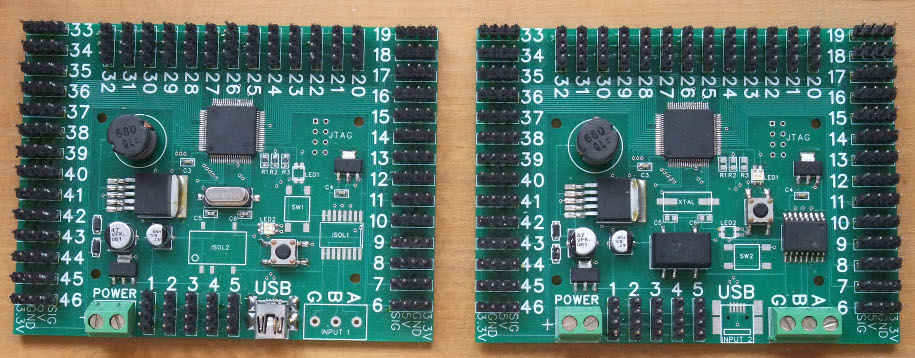In Development
Switchboard

Above we have a picture of our first prototype Switchboard device. By selection of components these can be manufactured in two configurations either direct to USB or via Omnibus to the computer. Whereas the first option is potentially appealing for users who do not already have an Omnibus system, it has the disadvantage that a separate USB port is required for each Switchboard (as opposed to Omnibus where up to 256 devices can be attached to each port). Each of the 46 pin clusters can be set as either an input or output. In addition the first five pin clusters can serve as analogue-to-digital converters. These, set as input with conversion on, can be used for throttles (optionally motorised). With a pin cluster set as an output, direct connection to a servo motor is possible e.g. for operating points (turnouts). Alternatively connection to daughter boards enables them to be used for switching tungsten lamps, LEDs or motors. This is potentially useful for complex signalling. If a pin cluster is set as an input, again via a daughter board, they can receive signals from occupancy detectors or simple push buttons. This in combination with LED outputs provides a highly versatile tool for the construction of interactive mimic panels.
Command Station
A self-contained computer system with built-in DCC signal generation which is capable of replacing the PC as the central point of the DCC₄PC system.
Booster
A 5A rated device with CDE input and capable of producing an NMRA conformant DCC signal including a cutout that complies with the stringent requirements of the NMRA RailCom™ specification (RP-9.3.1).
Bus Analyser / DCC Reader
The bus analyser device is intended to attach to a track output of any other NMRA compatible equipment similar to the ECoS Sniffer and in this way to enable users to continue using DCC commands generated by any equipment they may have previously purchased whether or not such equipment can produce a cutout.
Omnibus Adapters for s88, XpressNet and LocoNet
To enable you to use equipment you already own in a DCC₄PC system.